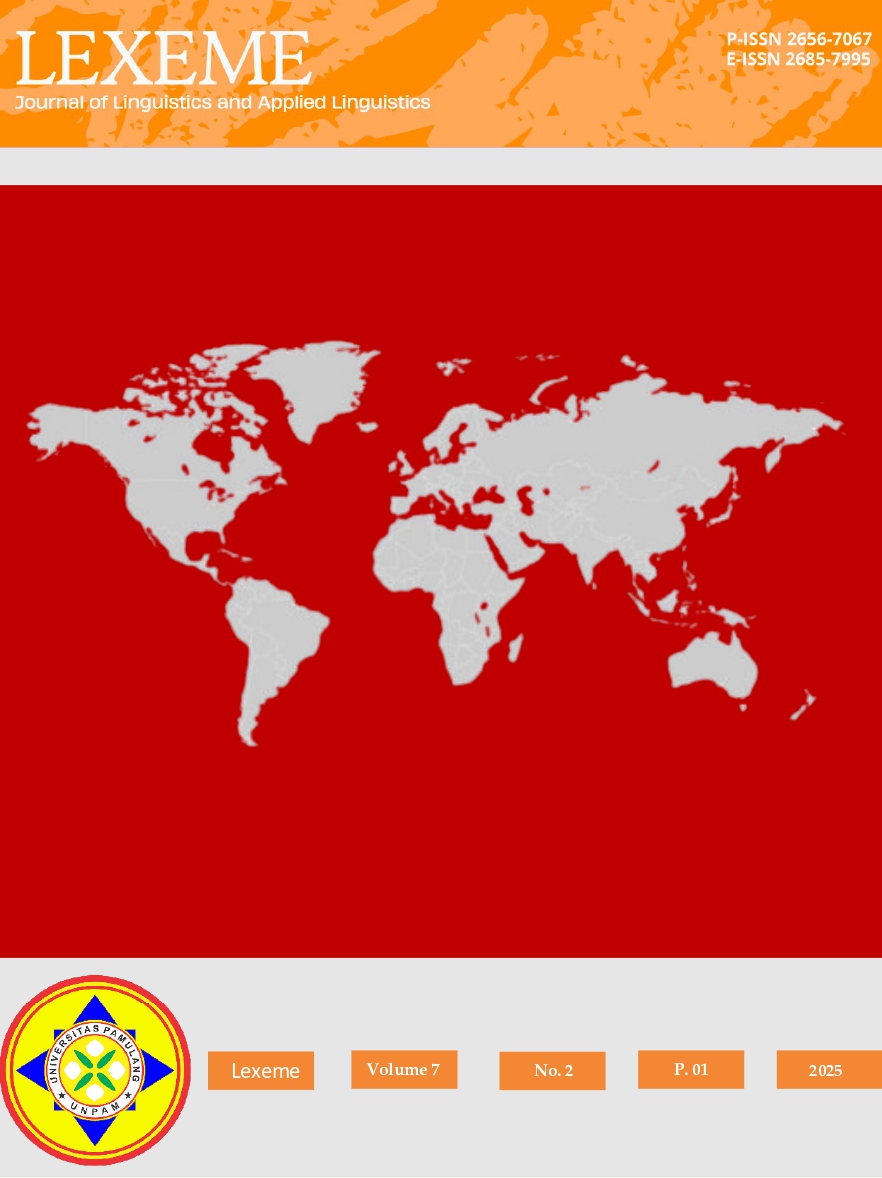Under Hoffman's Framework: The Analysis of Code-Switching and Code-Mixing in Leonardo Edwin’s Youtube Video Channel
DOI:
https://doi.org/10.32493/ljlal.v7i1.44089Keywords:
Bilingualism, code switching, code mixing, Leonardo Edwin, YouTubeAbstract
This research focused on analyzing the types and reasons for code-switching and code-mixing that occur in five videos on Leonardo Edwin’s YouTube channel. The aims of this research were: (1) to identify the types of code-switching used by Leonardo Edwin on his YouTube channel, (2) to identify the types of code-mixing used by Leonardo Edwin on his YouTube channel, and (3) to determine the reasons for the code-switching and code-mixing employed by Leonardo Edwin on his YouTube channel. The objects of this research were five videos from Leonardo Edwin's YouTube channel, titled Alaska. To conduct this research, the researcher employed a descriptive qualitative method. In analyzing the data, the researcher used content analysis based on the Hoffman framework. The results of this research show that the dominant type of code-switching is inter-sentential code-switching, accounting for 58.07%, while the dominant type of code-mixing is intra-sentential code-mixing, accounting for 68%. The primary reason for code-switching and code-mixing is discussing specific topics, which constitutes 80.77%. The implications of this study are to provide insights into the types and reasons for code-switching and code-mixing used by Leonardo Edwin and to illustrate how bilingual individuals utilize code-switching and code-mixing on YouTube.
References
Cahaya, A. S., Nurchurifiani, E., Hanum, I., & Vinantiastuti, M. L. (2023). Code-Mixing Usage in Fathia Izzati’s Youtube Channel Video. Lexeme : Journal of Linguistics and Applied Linguistics, 5(2), 21–30.
Creswell, J. W. (2003). Research Design Qualitative, Quantitative and Mixed Methods Approaches Second Edition. New Delhi: Sage Publications.
Gultom, R. (2021). Code Switching and Code Mixing used by Boy William Video YouTube Channel. Universitas Hkbp Nommensen.
Hamers, J. F., & Blanc, M. H. A. (2000). Bilingualism and Bilingualism. Cambridge: Cambridge University Press.
Hoffman, C. (1991). An Introduction to Bilingualism. Inc: Longman.
Jendra, M. I. I. (2010). Sociolinguistics: The Study of Societies Lenguage. Yogyakarta: Graha Ilmu.
Maheswara, M. R. S. (2022). English Foreign Language Teachers’ Assessment Literacy in Denpasar, Bali, Indonesia. Universitas Pendidikan Ganesha.
Manalu, H. M. (2023). An Analysis of Code Mixing and Code Switching Used by Qania Fanani On Youtube Channel. Jurnal Pendidikan Dan Konseling, 5(2), 1–12.
Muysken, P. (2000). Bilingual speech: A typology of code-mixing. Cambridge: Cambridge University Press.
Romaine, S. (1992). Bilingualism. Cambridge: Blackwell Publishers.
Sari, S. W., & Kusumawardhani, P. (2021). Recognizing Code Switching and Code Mixing in Talk Show Catatan Najwa with Maudy Ayunda on Youtube. IJEAL (International Journal of English Education and Applied Linguistic), 2(1), 1–12. https://doi.org/doi.org/ijeal.v1n1.1029
Søreng, E. K. (2023). Code-Switching on TikTok characteristics of and motivations for English-Norwegian code-switching on social media.
Titian Adi, W. (2018). Code Switching in Critical Eleven Novel. Journal of English Language, Literature, and Teaching, 2(1), 39. https://doi.org/10.31002/metathesis.v2i1
Trudgill, P. (2000). Sociolinguistics: An Introduction to Language and Society. Penguin UK.
Wardhaugh, R. (2006). An Introduction to Sociolinguistics. Blackwell Publishing.
Downloads
Published
How to Cite
Issue
Section
License
Copyright (c) 2024 Adinda Meisya, Eva Nurchurifiani, Dian windriani

This work is licensed under a Creative Commons Attribution-ShareAlike 4.0 International License.







